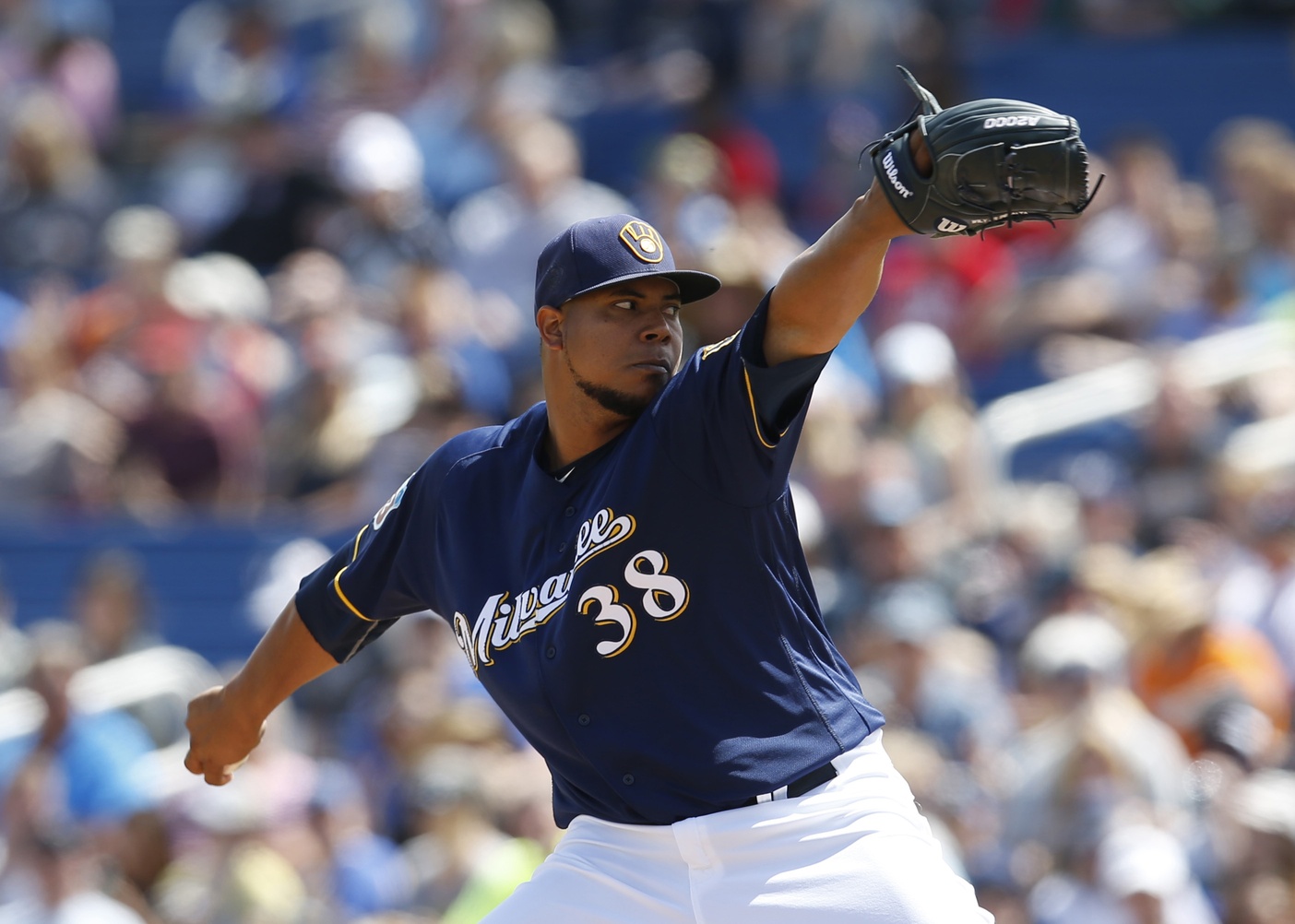Milwaukee manager Craig Counsell recently named embattled righty Wily Peralta as his Opening Day starter. On pure performance, this is a surprise and generally undeserved. However, this is a club without a clear choice for this spot, and Counsell’s decision is therefore likely as much about motivation and confidence than anything else. Veteran Matt Garza is perhaps the only member of the current rotation with a true expectation that this would have been his honor, but he struggled incredibly in 2015 and is not a member of the organization’s future so keeping him happy will not be a huge priority.
Therefore, this selection of Peralta appears to be designed to give a struggling young pitcher some confidence. It reinforces the organization’s faith and makes clear to Peralta that he will be given every opportunity to succeed. After all, his 4.20 DRA in 2014 is the lowest mark he’s posted since his cup of coffee in 2012.
But is that confidence well-placed? Peralta has garnered a reputation as high-upside and as a breakout candidate because of his pre-2013 pedigree. He was a BP Top 101 prospect in both 2012 and 2013, and he had a brief appearance in the major leagues at the end of the 2012 season. His five September starts were very impressive: 28 innings, seven runs, and 22 strikeouts. He carried the Brewers to their 18-10 September record and boosted many fantasy teams in their stretch run. The memories of this month have continued to follow him, even after the last few years.
PECOTA is generally pessimistic about Peralta’s 2016, which is not a surprise. Three years of poor performance tends to have that effect on a pitcher’s projection, and the result for this upcoming season is not great. His projections of a 0.8 WARP and 4.58 DRA do not paint a pretty picture; instead of a middle-of-the-rotation starter with a heavy sinker who can occasionally dominate, the Brewers are looking at a fifth starter who will fight to stay in the big leagues.
However, to me, the most concerning aspect of Peralta’s PECOTA projection is how exactly his peripherals break down. Projections do not have to be exact mirrors of past performance and career levels; if they were, they would be basically useless and indistinguishable from the back of a baseball card. Instead, they are also supposed to capture improvement and regression, which indicates some level of uncertainty.
We see this in certain other players’ projections. On the Brewers alone, both Taylor Jungmann and Jimmy Nelson are expected to perform differently than their projections. Nelson’s 2016 projected DRA is nearly one-fifth of a run lower than his career mark, and Jungmann’s is about half of a run higher. This is generally to be expected—projections are less certain for players with short track records.
And while Peralta still seems young and full of potential, he isn’t really. PECOTA is not optimistic about his chances this season, and not in a way that projects any sort of uncertainty or variability. It expects Peralta to be exactly the same mediocre pitcher he’s been up until this point.
Peralta’s career DRA is 4.61; his 2016 projection is 4.58. His career strikeout rate 6.3 per nine innings; his 2016 projection is 6.5. And his career walk rate is 3.2 per nine innings, while his 2016 projections is 3.0.
The implications of this are not encouraging. His subpar performance up to this point has a disappointment, but PECOTA clearly has seen enough. Obviously, a positive projection would have been the best-case scenario, but even a volatile one would have been encouraging, as it would have meant that at least a part of the jury was still out.
But that is not what we see. Instead, PECOTA sees Peralta as a pitcher who has already demonstrated what he is at the big league level. He is no longer a young starter full of potential but rather a back-of-the-rotation arm who will have to reach his seventy-fifth percentile projection just to reach 2.0 WARP. This is not the type of starter the Brewers will want to entrust their Opening Day to, and it is not the type of pitcher the Brewers are going to be able to rely on for the next few years.
